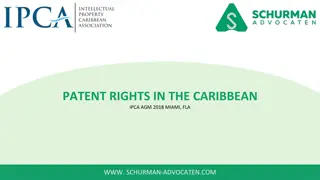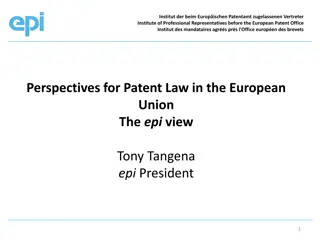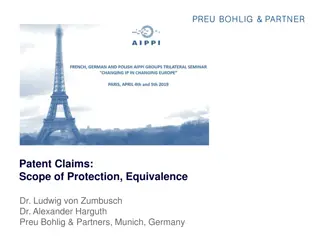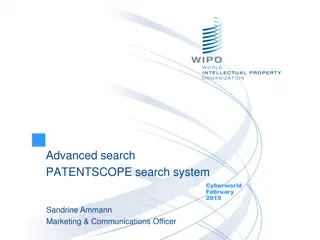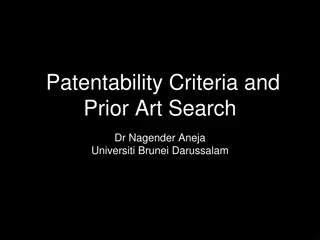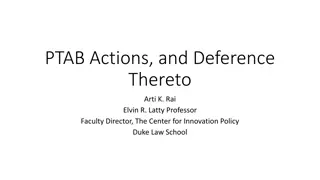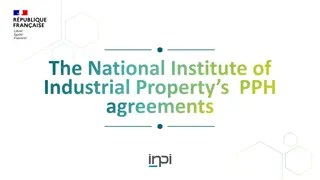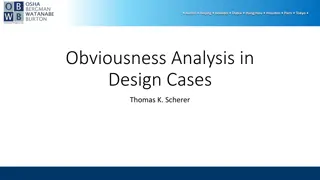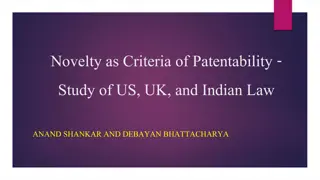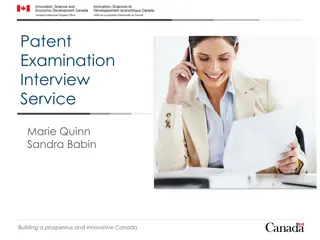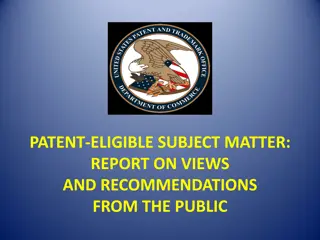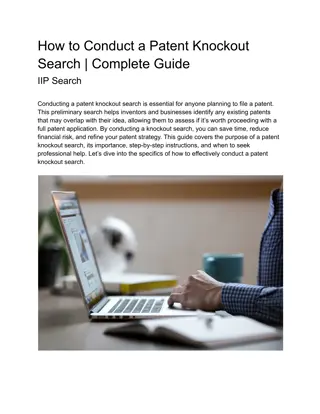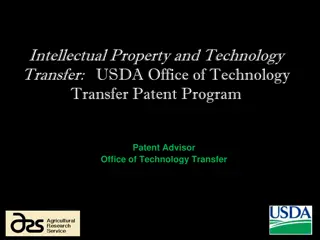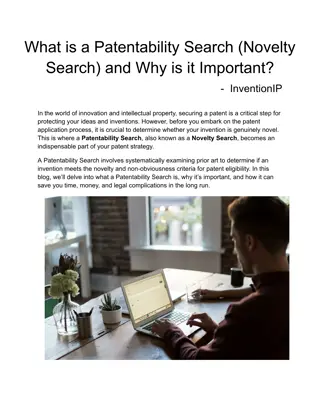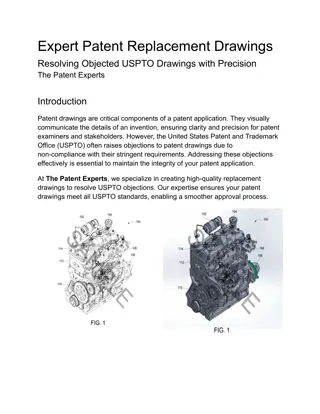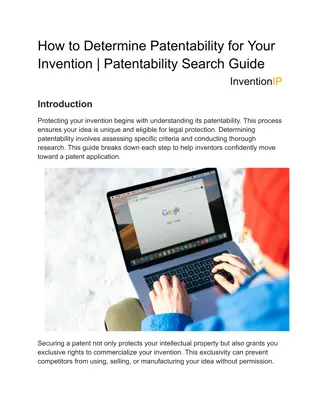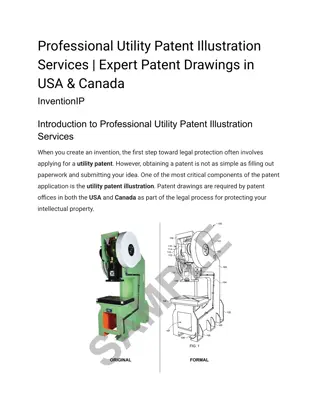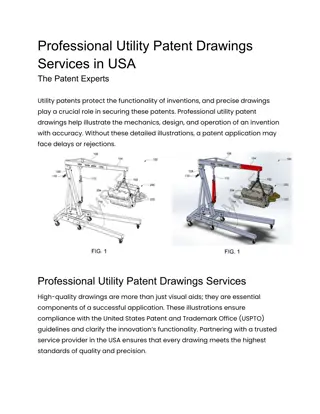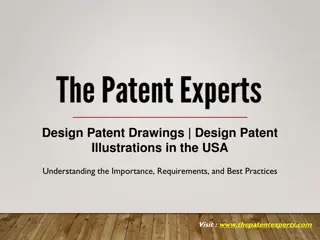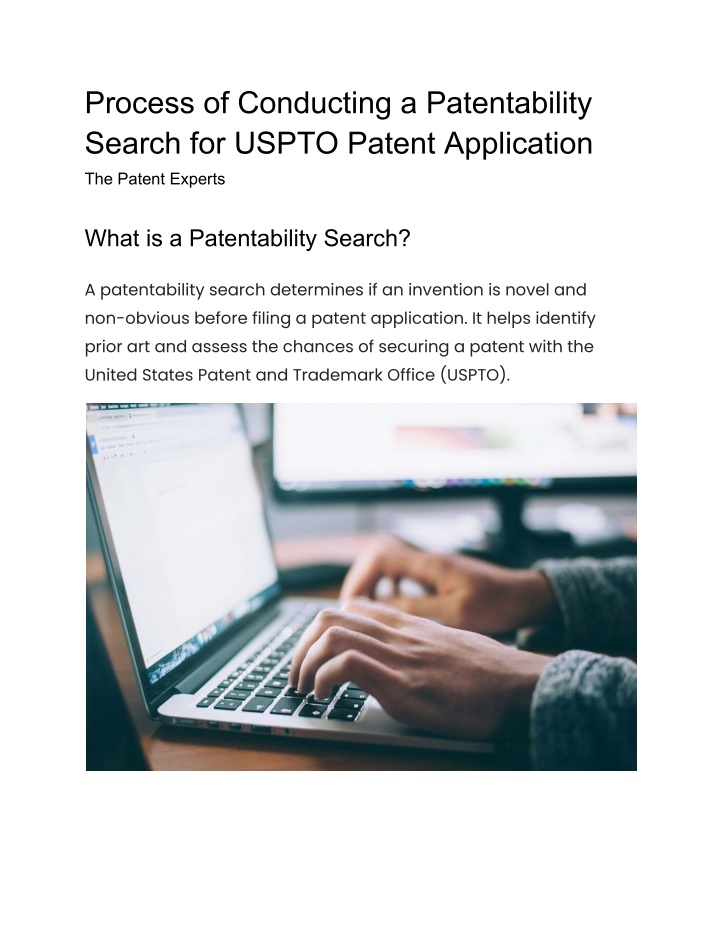
How to Conduct a Patentability Search for a USPTO Patent Application
A patentability search helps determine if an invention is novel before filing a USPTO patent application. This guide covers essential steps, including defining the invention, searching patent databases, analyzing prior art, and consulting a patent at
Download Presentation

Please find below an Image/Link to download the presentation.
The content on the website is provided AS IS for your information and personal use only. It may not be sold, licensed, or shared on other websites without obtaining consent from the author. If you encounter any issues during the download, it is possible that the publisher has removed the file from their server.
You are allowed to download the files provided on this website for personal or commercial use, subject to the condition that they are used lawfully. All files are the property of their respective owners.
The content on the website is provided AS IS for your information and personal use only. It may not be sold, licensed, or shared on other websites without obtaining consent from the author.
E N D
Presentation Transcript
Process of Conducting a Patentability Search for USPTO Patent Application The Patent Experts What is a Patentability Search? A patentability search determines if an invention is novel and non-obvious before filing a patent application. It helps identify prior art and assess the chances of securing a patent with the United States Patent and Trademark Office (USPTO).
Inventors and businesses conduct patent searches to avoid infringing on existing patents and ensure their ideas have market value. Conducting a comprehensive search enhances the efficiency of the application process and strengthens the scope of protection for the invention. Why Conduct a Patentability Search? Performing a patent search prevents wasting time and money on an application that may get rejected. It provides insights into existing patents and helps refine claims to improve approval chances. Additionally, a patent search offers the following benefits: Reduces Legal Risks: Avoids unintentional infringement on existing patents, minimizing the risk of litigation. Enhances Patent Strategy: Helps inventors modify and improve their designs to differentiate them from prior art. Saves Time and Resources: Filing a patent without a prior search may result in rejections, wasting resources on legal fees and resubmissions. Provides Competitive Insights: Analyzing prior art helps understand competitors patents and market trends.
Steps to Conduct a Patentability Search 1. Define the Invention Clearly Start by describing the invention in detail. Identify its key features, functions, and improvements over existing technologies. Questions to consider include: What problem does the invention solve? How does it function compared to existing solutions? What are its unique aspects? A well-defined invention description makes searching for prior art more efficient and accurate. 2. Identify Relevant Keywords and Classifications Using the right keywords ensures a thorough search. The USPTO classification system and the Cooperative Patent Classification (CPC) are essential for locating similar patents. Consider: Synonyms and variations of key terms. Industry-specific terminology. CPC classes relevant to the invention. For example, an electric toothbrush may fall under CPC classification A61C17/22 for dental hygiene devices. 3. Search USPTO and Other Databases
A thorough search involves multiple databases: USPTO Patent Full-Text and Image Database (PatFT) Provides access to granted patents and applications. Google Patents A free and extensive database with global coverage. European Patent Office (EPO) Espacenet Offers access to worldwide patent documents. World Intellectual Property Organization (WIPO) Useful for international patent searches. Scientific Literature & Technical Papers Research articles, whitepapers, and conference proceedings may contain relevant prior art. 4. Analyze Prior Art After gathering relevant documents, compare their claims, descriptions, and figures with your invention. Identify similarities and differences to determine if your idea is truly novel. Example: If your invention is a new type of noise-canceling headphones, reviewing prior patents on similar technology can help refine your claims to highlight unique aspects such as improved battery efficiency or adaptive noise cancellation. 5. Assess Patentability To qualify for a patent, an invention must meet three key criteria:
Novelty: The idea must be original and not disclosed in prior art. Non-Obviousness: It should not be an obvious improvement to someone skilled in the field. Utility: It must be functional and useful in its intended application. If similar inventions exist, you may need to modify your design or claims to increase your chances of patent approval. 6. Prepare Search Reports A well-documented search report includes: A summary of key findings. Citations of relevant patents and publications. An analysis of potential conflicts or overlaps. Recommendations for strengthening the invention s uniqueness. 7. Consult a Patent Attorney Patent attorneys play a crucial role in interpreting search results and advising on the best course of action. They help with claim drafting, application filing, and legal strategies to avoid infringement risks.
Case Study: Successful Patentability Search Background: A startup developing a biodegradable packaging material wanted to patent their innovation. Process: They conducted a patentability search, which revealed similar patents. After consulting a patent attorney, they refined their formulation and manufacturing process to make their product distinct. Outcome: Their revised patent application was approved, and they secured intellectual property protection, increasing their market value and investor interest. Common Challenges in Patentability Searches 1. Difficulty in Finding All Relevant Prior Art Some patents are written with complex legal language, making them hard to understand. Prior art may exist in obscure databases or non-patent literature. 2. Misinterpretation of Search Results Some inventors misjudge the novelty of their invention due to a lack of expertise in legal interpretation. A professional patent attorney can provide clarity.
3. Overlooking Foreign Patents Many innovations are patented internationally. Not checking global databases may lead to an incomplete search. FAQs About Patentability Searches Q1: How long does a patentability search take? A thorough search can take between a few days to several weeks, depending on the complexity of the invention. Q2: Can I conduct a patent search myself? Yes, but professional assistance ensures accuracy. Patent attorneys have experience in navigating classification systems and legal terminology. Q3: Is a patentability search mandatory? No, but it is highly recommended to avoid wasting resources on a weak application. Q4: What happens if my invention is similar to an existing patent? You may need to modify your invention or claims to emphasize its unique aspects. Q5: How much does a patentability search cost?
Costs vary based on the inventions complexity and whether professional services are used. DIY searches are free, while attorney-led searches can range from a few hundred to a few thousand dollars. Conclusion A thorough patentability search increases the chances of obtaining a USPTO patent. It identifies potential challenges early, saving resources and strengthening your application. Conducting this search effectively ensures a smoother patenting process and enhances your competitive advantage. Take the Next Step in Your Patent Journey! If you re ready to secure your invention, get expert assistance for a comprehensive patentability search. Visit The Patent Experts to ensure your innovation stands the best chance of approval!


